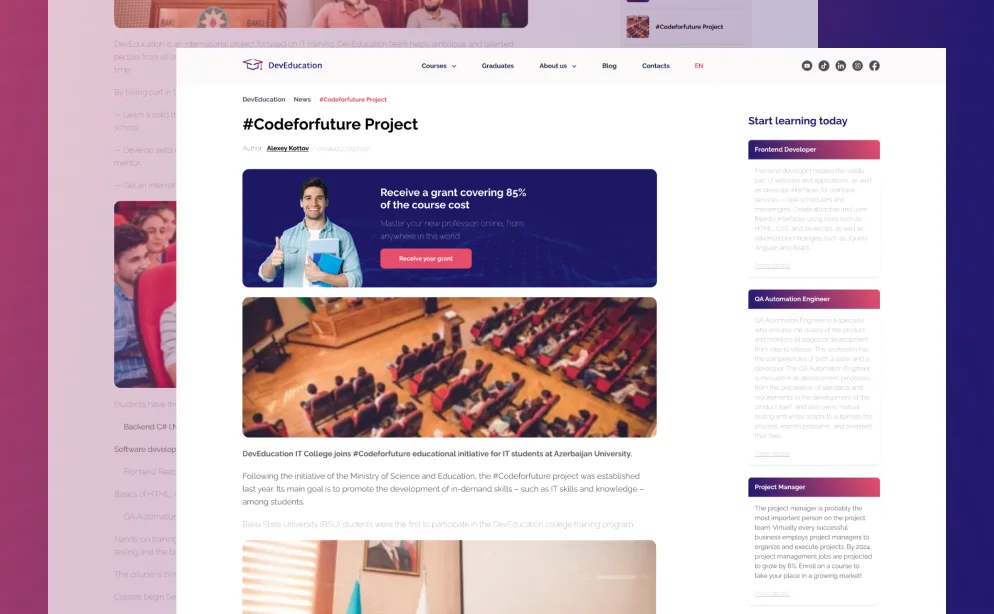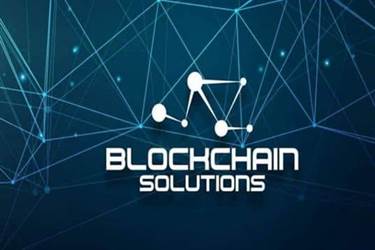Consider factors such as security measures, scalability options, support services, and cost when making this decision. With the help of a trusted “Blockchain as a Service” provider, organizations can streamline the implementation process and focus on leveraging blockchain’s potential for secure and decentralized identity management. Blockchain identity management benefits also provide identity management for decentralized web. Different third-party services such as internet service providers track the online activity of users.
As more and more of our lives are spent online and the physical world grows ever more digital, the very notion of identity is changing dramatically. Authentication of who we are and how we are represented online has become paramount to both individuals and organizations. People want power over their identities and control over how and with whom their information is shared.
What blockchain platforms are best for managing digital identities?
Having a proper way to identify ourselves and our possessions enables us to create thriving societies and global markets. At its most basic level, identity is a collection of claims about a person, place or thing. For people, this usually consists of first and last name, date of birth, nationality, and some form of a national identifier such as passport number, social security number (SSN), driving license, etc. These data points are issued by centralized entities (governments) and are stored in centralized databases (central government servers). But there are many other use cases for it, from supply-chain monitoring and e-voting to royalty tracking, data security, and identity management.
Sovrin is an open source network that allows for the online management of digital IDs. Created to “evolve the current system of siloed identities, endless passwords, and insecure databases,” the nonprofit enables frictionless, secure identity verification lasting a lifetime. According to an Allied Market Research report, the market for blockchain identity management solutions was valued at just $107 million in 2018 and will grow to $11.46 billion in 2026. Privacy concerns are paramount when it comes to identity management, and this is especially true with regards to government-issued documents such as passports and driver’s licenses. Birth certificates are an enduring example of the paper-based pre-digital identity management era.
Would you prefer to work with a financial professional remotely or in-person?
In Section 2, we will introduce relevant concepts of identity management and the building blocks in blockchain. Then, in Section 3, we will first introduce three existing blockchain-based identity management systems, prior to reviewing the related literature. In Section 4, we will identify and discuss potential research challenges and opportunities.

Data that forms a digital identity includes usernames, buying history, ID number, and search history. Almost all of our digital identities are connected through devices, services, and apps that have dominantly used centralized and federated identity systems. ImmigrationApart from carrying a passport, a traveler also needs to take along a specific set of documents for clearance and security checks at the airport.
Keys and Addresses in Python
Decentralized PKI (DPKI) enables everyone to create or anchor cryptographic keys on the Blockchain in a tamper-proof and chronologically ordered way. These keys are used to allow others to verify digital signatures, or encrypt data to the respective identity holder. Before DPKI, everyone had to buy or obtain digital certificates from traditional certificate authorities (CA). Many people today use the term verifiable credentials (VCs) to refer to digital credentials that come with such cryptographic proofs. Blockchain enables more secure management and storage of digital identities by providing unified, interoperable, and tamper-proof infrastructure with key benefits to enterprises, users, and IoT management systems. An individual first signs up for Civic’s app, which verifies the user’s identity through official (e.g. government) records.

Its approach has the potential to fundamentally redefine the economics of the internet and the way people interact virtually. To understand how blockchain technology can serve as an identity management solution, it’s important to first understand, at a basic level, how weaknesses in the current system have manifested. Blockchain designs can ensure personal information, verifiability and the proper controls follow users when they transition from one organization to another. Decentralized identity is the idea that identity-related information should be self-controlled, private, and portable, with decentralized identifiers and attestations being the primary building blocks. A collaborative approach will build trust and provide focused, individual user experiences. Identity and access management is the framework of processes, policies, and technologies to ensure that only authorized people have access to technology resources, information, or services.
Ask a Financial Professional Any Question
Blockchain technology provides a potential solution to the problem outlined through enabling people to store data on a blockchain, rather than hackable servers. Information, once stored on a blockchain, is secured cryptographically and cannot be altered or deleted, thus making massive data breaches very difficult, if not theoretically impossible. Distributed or centralized, IAM UX is the interface of digital identity, personal identification and control mechanisms for individuals’ data.
- However, traditional identity management systems have long relied on centralized intermediaries who issue, hold, and control your identifiers and attestations.
- As the number of users increases, the system’s performance might not scale linearly, potentially causing inefficiencies and delays.
- Further, the immutable nature of blockchain ensures that once the identity is validated, it cannot be tampered with, boosting the security and reliability of the system.
- The decentralized nature of blockchain allows individuals to have full control over their digital identities, eliminating the need for intermediaries to manage and store personal information.
- Use cases enabled by DLT — such as self-sovereign identity and data minimization — via techniques such as zero-knowledge proofs offer stronger privacy protections.
- Blockchain designs can ensure that personal data, auditability, and adequate controls follow users as they move from one organization to another.
Users store their ID data and credentials in a decentralized identity wallet app, and the blockchain enables this data to be instantly verifiable without having to contact the issuer. Identity networks are a type of decentralized infrastructure for digital identity management, which connect different platforms, protocols, and standards. Identity networks provide services such as discovery, resolution, validation, and governance of digital identities, using blockchain or other distributed ledger technologies.
Achieving forward unforgeability in keyword-field-free conjunctive search
A defining characteristic of this technology is its distributed, peer-to-peer structure, which theoretically obviates the need for intermediaries like Yahoo or Equifax to house data. Online voting schemes are susceptible to manipulation, especially if malicious actors create false identities to vote. Asking individuals to present on-chain attestations can improve the integrity of online voting processes.

As well as being able to potentially prevent massive data breaches, the technology could allow individuals to retain control over their digital identities (known as self-sovereign identity). This article will explore each of these solutions in greater depth, focusing on one example of each approach. In doing so, we will gain an understanding it consulting rates and fees of the approach each company advances, their challenges, and their relative merits. Identity and access management (IAM) has become a core building block for managing and authenticating digital identities. However, organizations face challenges with the design and security of IAM processes, prompting them to consider new technologies.
Three factors that can help in building a trust score are
Higher will be the trust score, higher will be the trustworthiness of an individual.The trust score generated by Smart Contracts can help organizations validate users’ identities in real-time. Instead, the transactions made between identity holders and companies will only be recorded on the blockchain. To understand how a blockchain identity management system works, we should know about the technical components involved in the process.
Benefits of Blockchain Identity Management
Accenture, along with Microsoft and Avanade, created a blockchain-based identity management tool that was presented at ID2020 Summit. Dock’s Verifiable Credentials Platform makes your data fraud‑proof and allows your stakeholders to verify its authenticity in seconds – making expensive, time‑consuming, and manual verification processes disappear. Every time a request for data is made, the user will be prompted to give permission to show a credential. Another privacy feature that can be implemented with blockchain is called Zero-Knowledge Proofs where people can prove claims without revealing the data at all.
Any investment or trading is risky, and past returns are not a guarantee of future returns. Privacy-focused cryptocurrency Monero also relies upon daemons to communicate with the network and notify wallet-holders of new transactions. Immutability — the inability to delete records on a ledger — is beneficial to security, but it can affect the privacy of PII. Determining what information stays on-chain vs. off-chain is important for other criteria on this list. The issues of using DLT in IAM processes span technical, legal, business and cultural implications.

